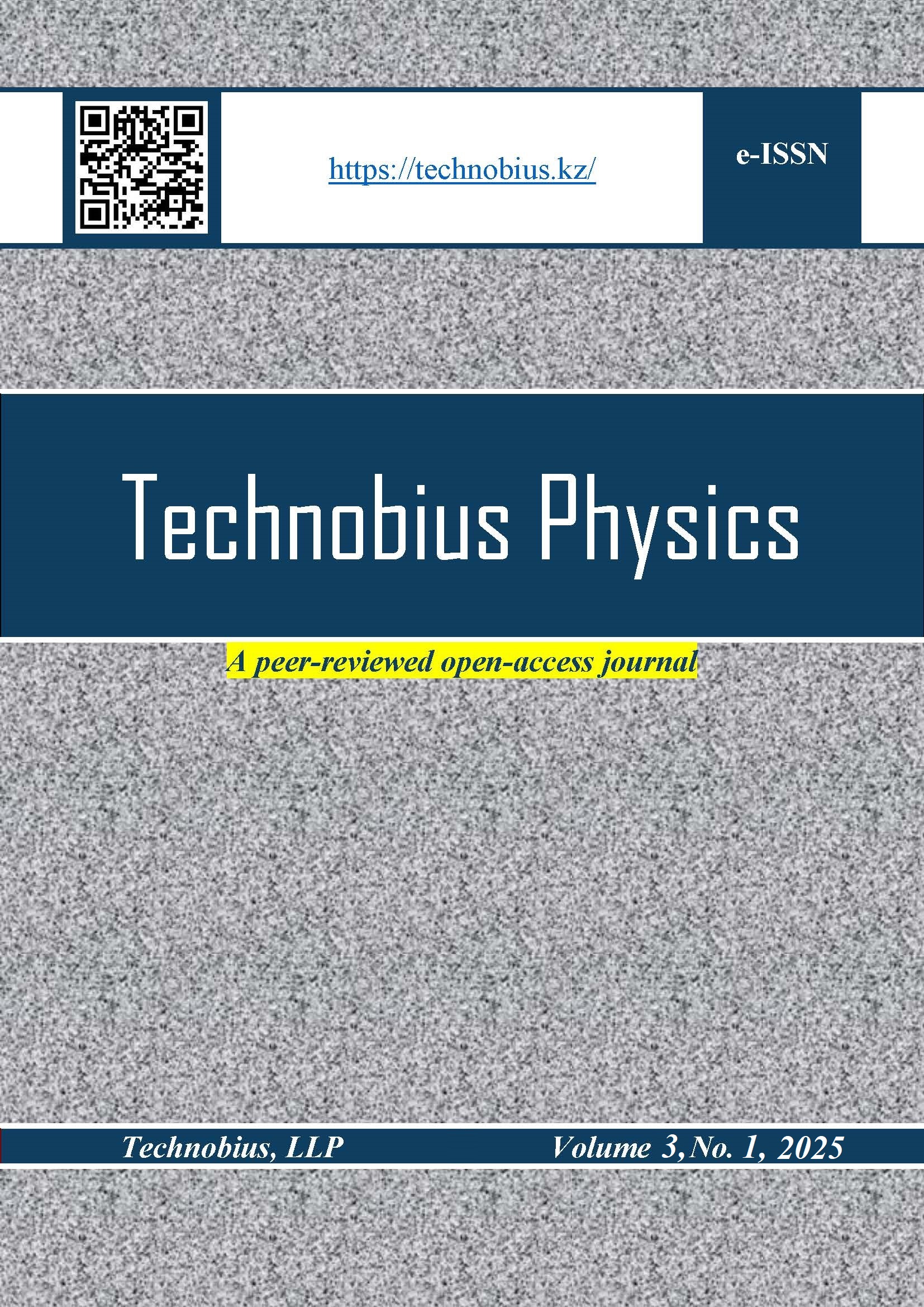Experimental determination of X-ray absorption and K-edge behavior in metal foils
DOI:
https://doi.org/10.54355/tbusphys/3.1.2025.0028Keywords:
X-ray absorption, mass attenuation, K-edge detection, metal foils, wavelength dependenceAbstract
This study investigates the absorption behavior of X-rays in various metallic foils, focusing on the dependence of transmitted intensity and mass attenuation coefficients on material thickness and radiation wavelength. The objective was to experimentally validate theoretical models of X-ray attenuation and to determine the position of K absorption edges for selected elements. Using a goniometer-based X-ray setup equipped with a Geiger-Müller counter, a series of measurements were conducted on aluminum, zinc, tin, copper, and nickel foils under controlled conditions. The first part of the experiment demonstrated an exponential decrease in transmitted intensity with increasing absorber thickness. The second part established a cubic dependence of the mass attenuation coefficient on the wavelength of the incident X-rays, consistent with theoretical expectations for photoelectric absorption. In the third part, distinct K absorption edges were successfully identified for copper and nickel, with experimentally determined edge energies closely matching known values. The results confirmed that materials with higher atomic numbers exhibit greater absorption and sharper K-edges. Minor deviations observed near absorption thresholds were attributed to spectral interference and detector resolution limitations. Overall, the study validated key theoretical relationships and demonstrated the effectiveness of the experimental setup for accurately characterizing X-ray absorption behavior in metals.
Downloads
Metrics
References
G. Bunker, “X-ray absorption spectrometers,” Encycl. Spectrosc. Spectrom., pp. 610–616, Jan. 2016, doi: 10.1016/B978-0-12-409547-2.05066-6.
R. Hauko, J. P. Gomilšek, I. Arčon, and A. Kodre, “Absolute determination of the x-ray absorption coefficient of strontium in the K edge region,” Radiat. Phys. Chem., vol. 103, pp. 203–208, 2014, doi: 10.1016/J.RADPHYSCHEM.2014.05.059.
O. Paul, S. Toscano, K. Totland, and M. Landolt, “The spatial origin of the spin-polarization of secondary-electron emission from Fe,” Surf. Sci., vol. 251–252, no. C, pp. 27–30, Jul. 1991, doi: 10.1016/0039-6028(91)90947-Q.
M. T. Murphy and J. C. Berengut, “Laboratory atomic transition data for precise optical quasar absorption spectroscopy,” Mon. Not. R. Astron. Soc., vol. 438, no. 1, pp. 388–411, 2014, doi: 10.1093/MNRAS/STT2204.
L. Li et al., “Study on the origin of linear deviation with the Beer-Lambert law in absorption spectroscopy by measuring sulfur dioxide,” Spectrochim. Acta - Part A Mol. Biomol. Spectrosc., vol. 275, Jul. 2022, doi: 10.1016/J.SAA.2022.121192.
Y. Sun, R. Hong, C. Tao, and D. Zhang, “Design and Optical Field Tuning of ITO Multi-Layer Films Based on Tamm Plasmon Effect,” Zhongguo Jiguang/Chinese J. Lasers, vol. 51, no. 22, Nov. 2024, doi: 10.3788/CJL240479.
W. Lu et al., “Recent progress of multilayer composite transparent conductive film,” Kexue Tongbao/Chinese Sci. Bull., vol. 62, no. 5, pp. 372–384, Feb. 2017, doi: 10.1360/N972016-01133.
Downloads
Published
How to Cite
Issue
Section
Categories
License
Copyright (c) 2025 Sanzhar Serik

This work is licensed under a Creative Commons Attribution-NonCommercial 4.0 International License.








